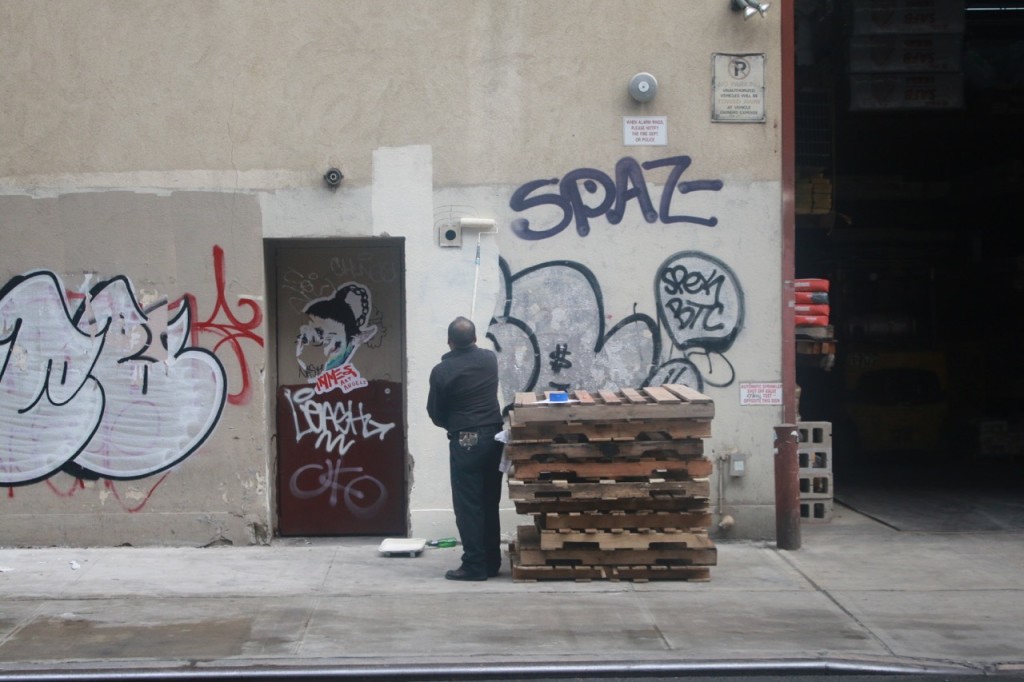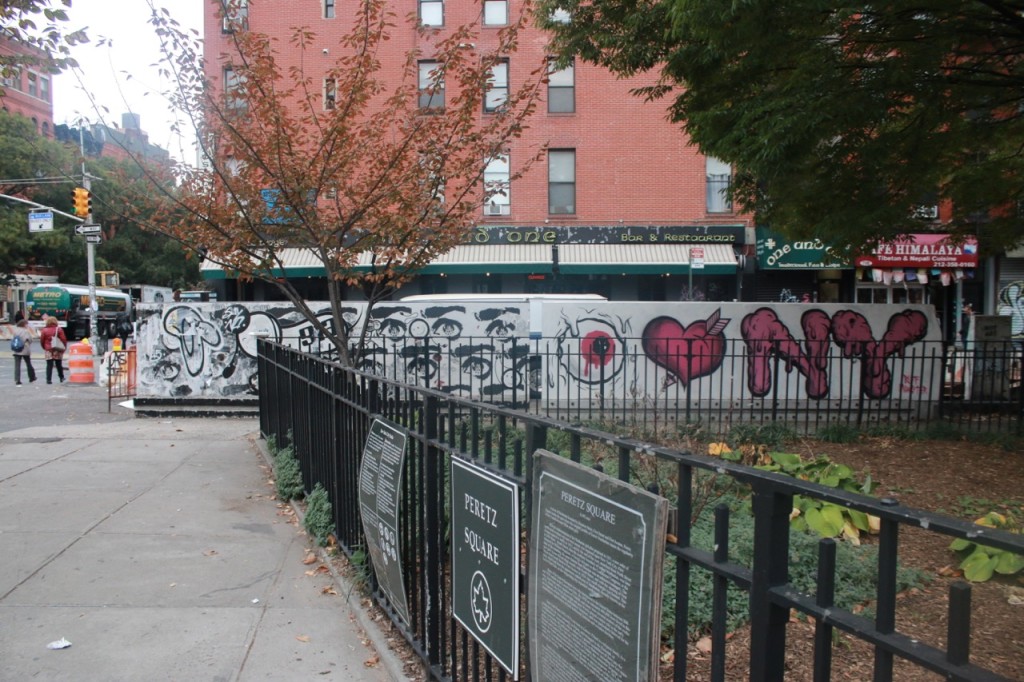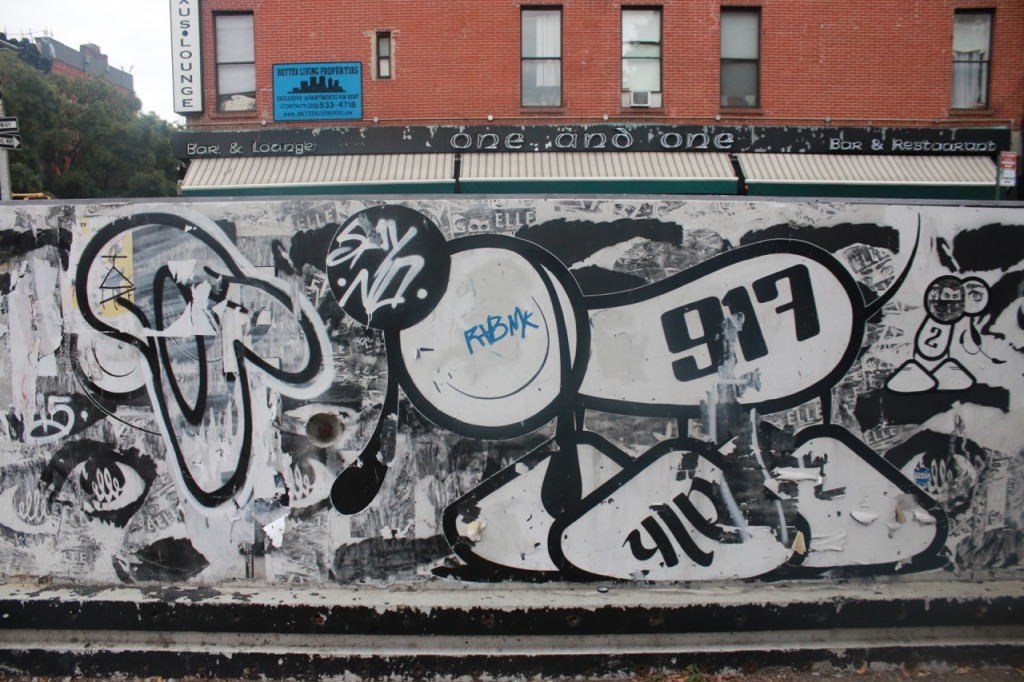Over the summer, I was out in Barcelona and ran into this cool wall of local writers. Just thought it deserved to be posted here.
-Barcelona, ES

Today marks the 22nd anniversary of Wu Tang Clan’s Enter the Wu-Tang (36 Chambers) and A Tribe Called Quest’s Midnight Marauders, both groundbreaking rap albums, both groups hailing from a city known as New York. In commemoration of these legendary rap groups’ shining achievements, here is a graffiti/street art excerpt from BDAB’s last trip to the heart of New York City. I’ve traveled to many metropolitan cities of America, including Los Angeles, San Francisco, Chicago, Houston, Boston, Miami, but no other city has graffiti culture that can match the great New York, NY.
On every street corner, there is a skillful tag, throw-up, or bomb densely populated onto a wall. It was just mind boggling how majority of it were so good. I might get burned for saying this, but I don’t think the average LA graff head could survive out in NYC.
NYC is the graffiti and street art mecca of the world.


This post is a little late, but you know what they say, “Better late than never.”
Hanksy (@hanksynyc) is an anonymous street artist born to Internet fame through his humorously infectious wheatpasted posters found on decrepit walls, mostly in New York City, that poke fun at American popular culture. His type of humor is the kind that is so stupid that it’s funny, and I’m not saying that maliciously. You’d agree with me after seeing pieces from Hanksy like “Kanye Brest” and “Dope Francis”. Even the moniker that he chose, “Hanksy”, is obviously a hijacking from the most famous street artist of our time, Banksy. You can often find Tom Hanks’s grinning wheatpasted face nearby Hanksy’s tags, if you’re wondering about the other popular culture reference.
You know how I’ve been bemoaning the death of street art? Well, Hanksy might have heard my complaints because he put on a rather noble endeavor in Los Angeles a little over a week ago in an abandoned mansion that should give street art fans some hope. He invited 50+ artists to this mansion to paint and takeover almost every inch of the place, leaving behind a visual anarchy of graffiti, murals, installations, and performance art. Some recognizable names in the US scene and abroad, like Craola (@craola), Morley (@official_morley), Skid One (@skidonedms), Mear One (@mear_one), Fanakapan (@fanakapan), etc came to destroy these walls. There was no sponsor, no entry fee, and certainly no commercial efforts to sell wares. Artists had worked in the mansion for weeks, but it was viewable to the public for only one day, October 10th from 6pm to 10pm. There was even an after-party at the neighboring rundown house, which anyone could attend after contributing a small donation at the door.
Ephemerality? Check. Raw, dirty, and disorderly? Check. Graffiti and murals? Check and check. We got ourselves a proper street art party, boys.
I am still a little torn about how I feel about this show. It’s nearly captured the rebellious, DIY, ephemeral essence of street art, but what makes street art different from all other art is that it is publicly persecuted and it is this persecution that drives the creativity and relevance of the genre, which a legal show cannot ever hope to achieve. Let’s take for example Iranian street art and the fatal persecution that these street artists face for their art. If you take out the context of personal risk and political struggle, then their images lose all power and are nothing but silly little stenciled pictures on walls. However, once the context is restored, the images are suddenly imbued with power and potency. However, that is not to say sanctioned shows like Hanksy’s don’t have their own utility in the sphere. Perhaps it could be a gateway for attendees to research said contexts.
Well, I’ll get off my soapbox now. Check out the pictures from the show and decide for yourself how shows like this fit into the current state of street art. Let us know what you think in the comments.
Yesterday, I serendipitously ran into an exciting and emerging “social live-publishing/story-telling/live-blogging” platform that I think will solve the most important problem that all bloggers are trying to overcome: to push out as many quality posts as you can, as quickly and as efficiently as possible. The solution may be Pressimus. Below is an example of a Pressimus press (that’s what these micro-blog posts are called in the world of Pressimus) that I wrote in less than 5 minutes using the simple drag and drop tools, as well as its super useful functionality to search any social media directly in the platform. That’s how I found every single video, articles, and Instagram pictures in the press below. You can also easily embed the press into your own blog by simply copying and pasting a short line of code into the text of a regular post.
Please check it out and tell us what you think, especially if you’re a blogger yourself.
ROA painted three walls in Townsville, North Queensland, Australia, early last month, but all of the usual street art media have completely missed it. Now that begs the obvious existential question in this Internet age of street art: If no blogs report it then were the walls actually painted?
It looks like this Belgian muralist has once again done his research on the local animals. ROA almost always paints animal species that are native to the country or city where the wall is located for greater engagement with the community. In this case he has chosen a goanna holding his own tail as a whip, a turtle sitting atop a crocodile, and a sugar glider chained to a faucet. Is the goanna a reference to legends of how it beat people by using its tail as a whip? Is the turtle and crocodile an aboriginal totemic symbol? Is the sugar glider a commentary on illegal pet trade?
The walls were commissioned by Townville’s city council as part of an initiative to guide the development of street art in the city. I’m glad to see small cities like this investing in street artists’ livelihood and hopefully it will soon trickle down even to artists all over the world that aren’t as famous or popular as Roa.
Check the jump for more pictures gathered from around the web.
The Brazilian twin street artists known as Os Gemeos (@osgemeos) announced this morning through their Instagram page that they have been tapped to bring animations of their colorful characters to Times Square billboard monitors. The videos will begin at 11:57pm and end at midnight every night from August 1st to the 31st.
Titled “Parallel Connections”, this project will bring attention to their art, and indirectly to street art in general, to millions of casual New Yorkers and tourists alike that frequent the popular spot in Times Square. This is big news!
If you’re in the area, make sure to stop by once. If you do, please tag #bestdamnartblog on Instagram and hopefully we’ll feature your video.
We start off exactly where we left off last time, in Long Beach, CA. I will admit that most of the artists below are new to me, but that is why events like Pow! Wow! Long Beach are so valuable to expand your horizon of artists that you were unfamiliar with prior.
Street art purists bemoan the loss of ephemerality of sanctioned walls, that it no longer requires artists to employ stealth, speed, and creativity to complete a mural all while dodging law enforcement, and that it loses its impact of unexpectedly running into a powerful image in the street that wasn’t there the night before. I can agree with that. However, I think there’s still room for community participation in street art that invites casual observers to dive in headfirst to naturally grow the movement.